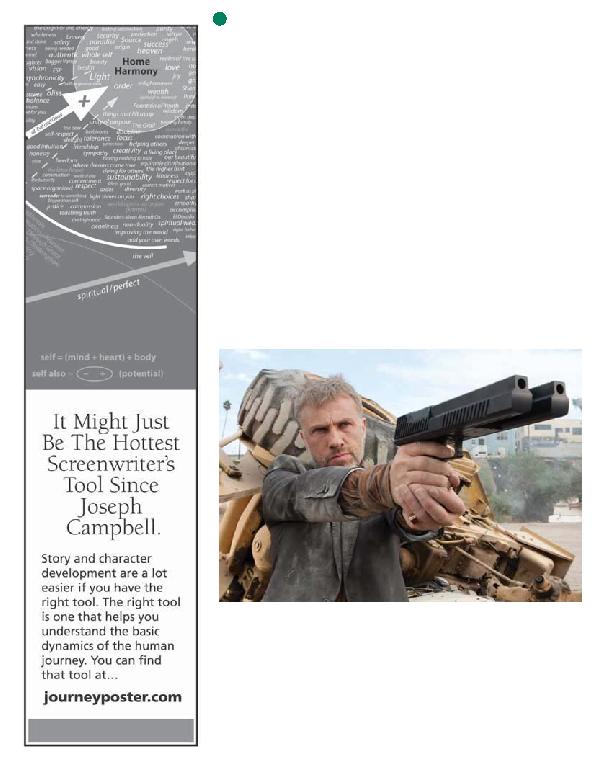
ideas off each other while they work. "We sit
down and argue every line and every moment
and every beat," Goldberg says, which he ad-
mits is the least interesting way to explain
their process but also the most efficient. "Not
to say we don't keep going if we're not to-
gether, but it's always better when there's
someone to second guess the other person."
solid, funny material. "You have to write jokes
or the studio just won't make the movie," he
says with a chuckle. "I wish I could just write a
script that wasn't funny and say, `Don't worry,
we'll make it funny when we shoot it.' They
just don't trust you." That being said, he also
says that The Green Hornet uses a lot of the nat-
ural, on-the-fly dialogue and humor that marks
his other movies. Goldberg is quick to point
out, though, that the final cut of Superbad was
still almost 90% scripted material. Rogen agrees
with a shrug and says, "You'll improvise stuff
for two hours and then you'll end up using ex-
actly what you wrote in the first place."
way that they approach comedy. They start
out very detailed and then pare it down to
give freedom to the stunt coordinators, but
then end up adding the details back in so
there will be working material on the page.
"You've got to write what you want to actu-
ally have happen," Goldberg says. "Then
someone's going to disassemble it. Then
you're going to compare it to what you've
stunt people in the world, arguably, come up
and tell you that they have a great idea, you
don't tell them to do what you wrote in the
script. But you've got to write it regardless."
He points out that while many action se-
quences in Pineapple Express were replaced by
better material on set, many of them were also
done as written. The screenwriters give the ex-
ample of a scene in The Green Hornet when the
contents of Britt's pool house get destroyed in
an extended action sequence. Fight choreog-
rapher Jeff Imada was given free reign and
threw out idea after idea such as catapulting
fighters through windows and using micro-
phones as weapons.
martial arts was a dream come true, they also
feel that a good action-comedy may be the
hardest genre to write for. Or, at least, the
hardest to write well. "If it's good, you really
want the action to be part of the story and the
characters," Rogen says, "and at the same time
tonally not feel different from the rest of it. So
two guys just talking about stupid funny stuff
as it is when there's 50 guys shooting at those
two guys -- it's a real challenge to do all that."
that hinged on a solid villain. "For Pineapple
Express," Goldberg explains, "Gary Cole re-
ally nailed it, but we only had two days to